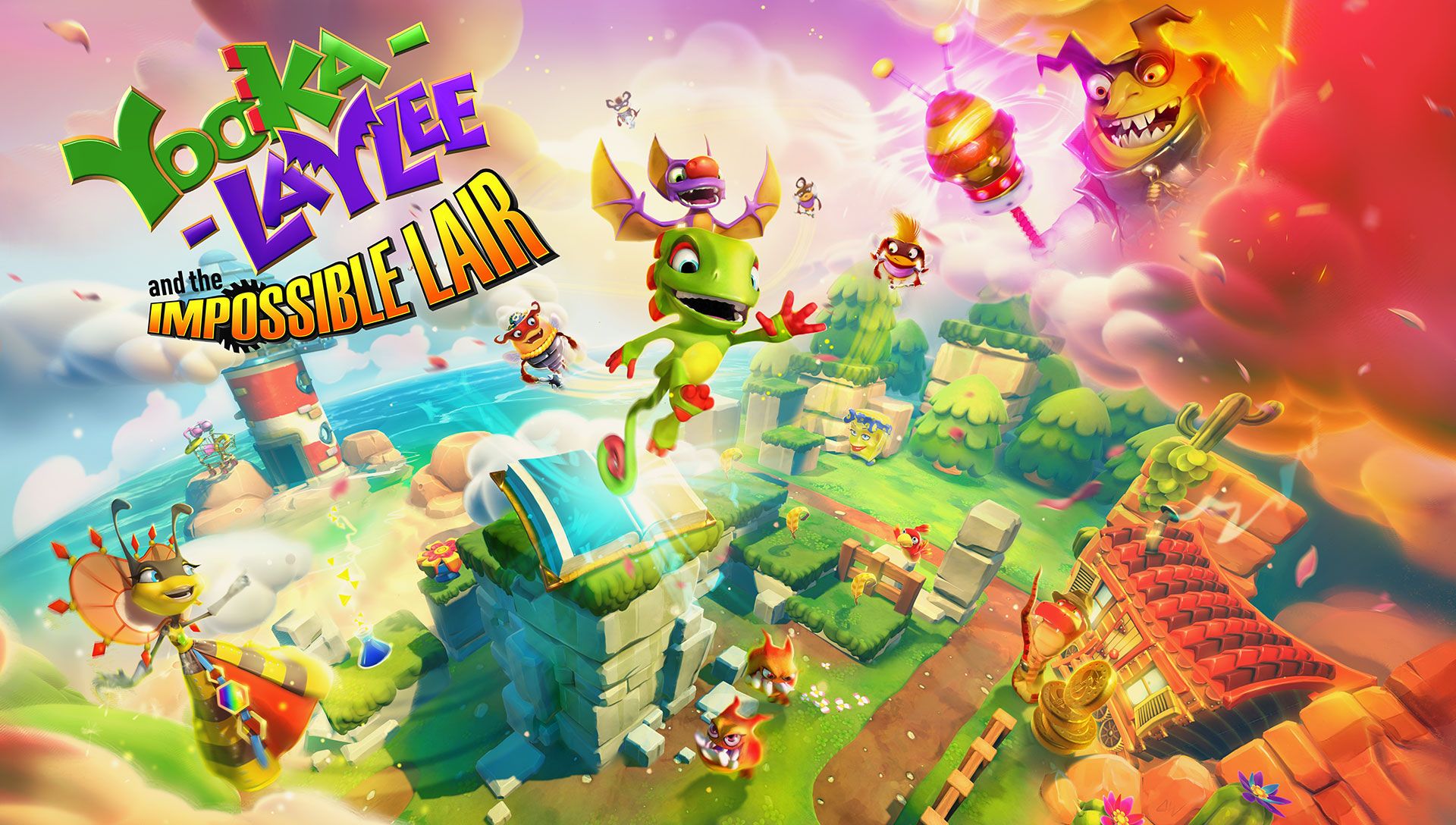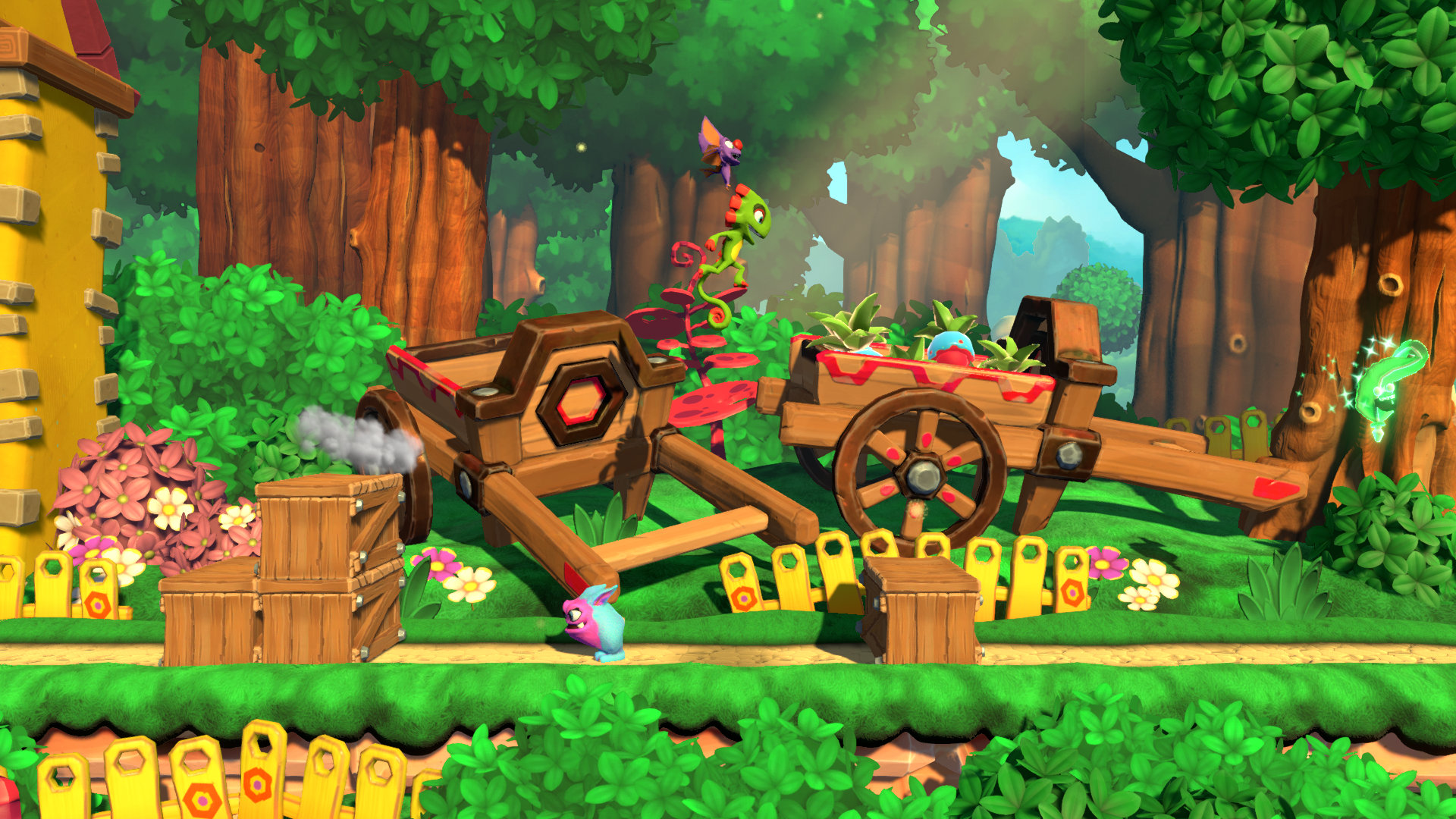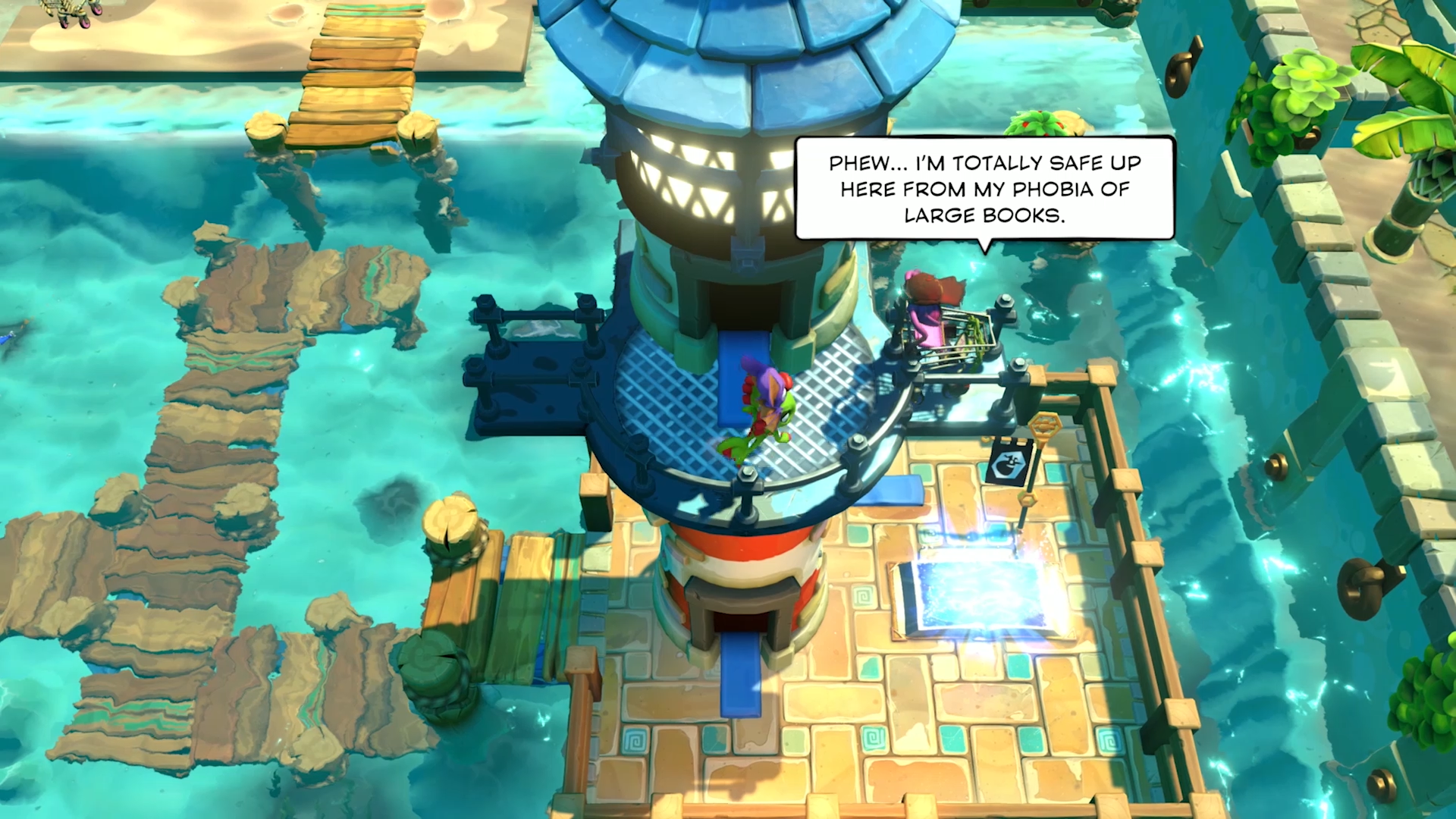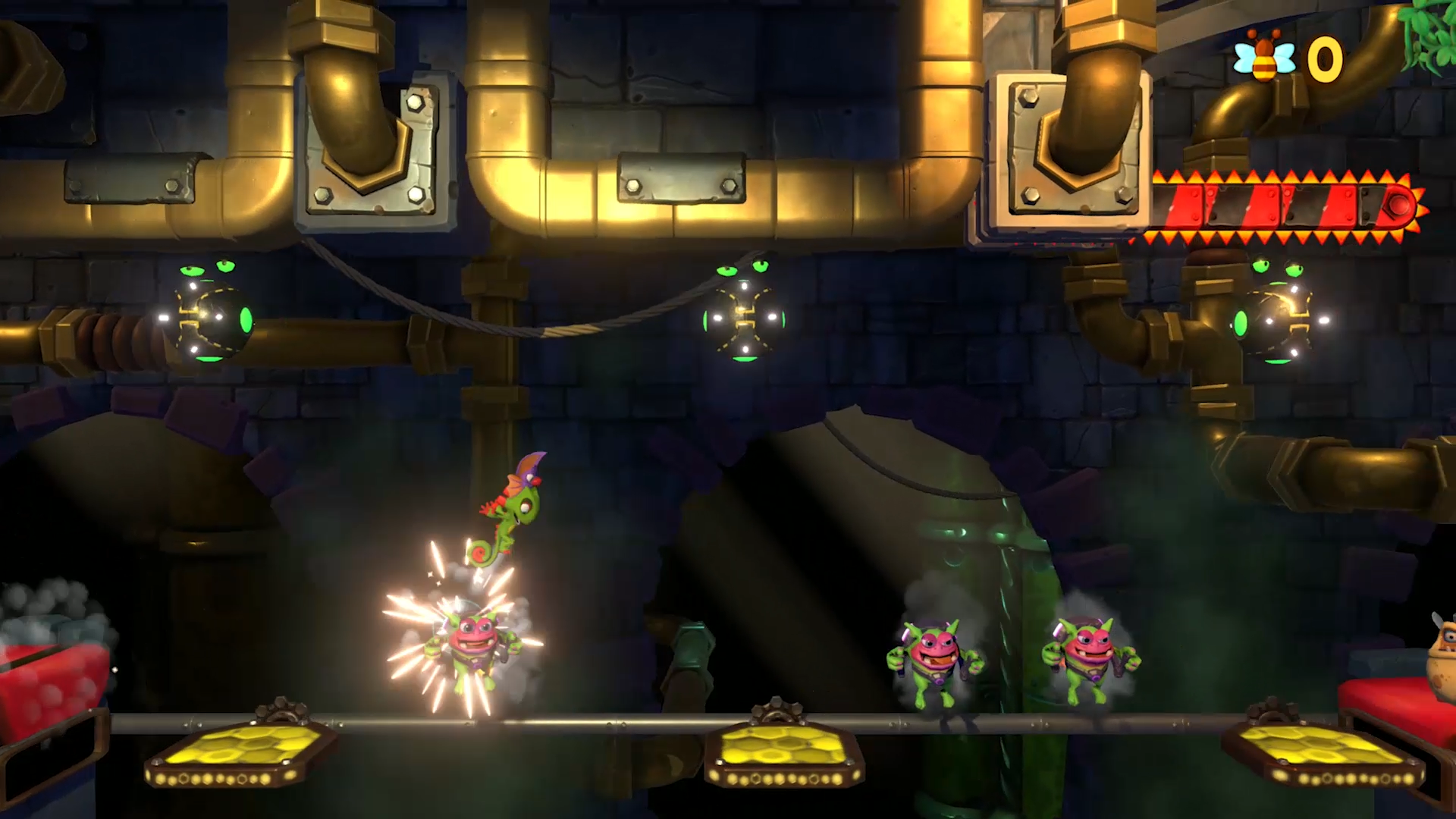It's quite likely that just by its nature of being a 2D platformer, Yooka-Laylee and the Impossible Lair interested me to a level where its 3D predecessor just didn't. I was always more of a Donkey Kong Country kid more so than Donkey Kong 64, and even if Playtonic and Team17 downplayed comparisons to Retro Studios' reboot of DKC, a number of overlapping elements had me sold. Couple that with a Breath of the Wild-like approach to its final level and unique ideas with the overworld and we had something that I thought could be a winner.
After completing all 20 chapters of this game, I can say that it plays nearly as well as the likes of Donkey Kong Country: Tropical Freeze, which I hold in high regard. Some shortcomings for sure, but the platforming was mostly solid. I have to say, though, that the 10+ hours I've played this difficult platformer has driven me to madness, with an abundance of expletives perpetually spilling from my mouth. It came to a point where I had to reexamine my love for the 2D character platformer.
If I haven't implied it enough, Yooka-Laylee and the Impossible Lair is an f-ing hard game.
[pullquote]"...the 10+ hours I've played this difficult platformer has driven me to madness, with an abundance of expletives perpetually spilling from my mouth."[/pullquote]
It's hard to appreciate the Yooka and Laylee pair as much anymore when their influences of Banjo and Kazooie are back in the headlines, but the chameleon and bat do their best. Capitalist bee Capital B is back as the villain, taking something called the Hive Mind to control the entirety of the Royal Stingdom (this is only the beginning of the bee puns). Yooka and Laylee storm Capital B's new Impossible Lair with the help of Queen Phoebee and the Royal Beetalion (sigh), but Capital B uses the Hive Mind to mind control and scatter all 48 members of the Beetalion around the world.
If your platforming skills are unprecedented, it's possible that you could have beaten the game in that opening. But more than likely, you'll get defeated and ejected into the overworld. From there, you'll find 20 chapters, each with two variations, making for 40 platforming levels; the end of each level will free a member of the Beetalion (each with a name being their own painful bee pun). And that's important, as each bee will take exactly one hit for you should you try the Impossible Lair level again. Of course, you can try the Impossible Lair whenever you'd like, but the fewer bees you have, the better at platforming you better bee (eh heh).
Getting around the overworld, which is topdown and with 3D movement, is fascinating all onto its own. It's more than a map for getting to one level to the next, featuring a number of puzzles. Like other platformers, you'll need collectibles (T.W.I.T. coins, in this game's case) to pay your way to further sections of the overworld, but a number of the levels are only accessible from interacting with objects in the overworld. Some of these overworld puzzles poked at my brain, and overall, it's all a nice break from the much faster proper platforming in the main chunks of the game.
None of the mechanics in Yooka-Laylee and the Impossible Lair should be particularly surprising. You'll run, jump, and butt stomp, while a rolling mechanic from the first game functions more like it does in a Donkey Kong Country game. You are encouraged to gain momentum by rolling, adding a bit of pop and height to jumps; rolling becomes appealing enough that it's almost the default way to travel. Some of these techniques are only available when Yooka has Laylee; in lieu of a health bar, Laylee flies erratically around in a panic (a la Baby Mario in a Yoshi game), but you can retrieve her by getting to her on time or ringing a bell.
And you'll need some of these techniques to grab those collectible T.W.I.T. coins, which five found in each level. Some are hidden away, and poor telegraphing makes them easy to miss, so you'll really have to comb through every nook and cranny. You'll collect quills as currency, and a number of feathers of different colors with faces act like Red Coins in Super Mario games, providing a mini-challenge to collect quills for a bonus, like a quill with a higher value or a coin. Each level is dense with these bonuses, along with varied obstacles and enemies, but save for a couple of rush levels, there isn't a sense of urgency; players can take the levels at their own pace.
But "relaxing" is the last word I would use to describe the platforming; checkpoints are generous indeed, but beware of difficulty spikes throughout. It eventually got to the point where defeating a difficult platforming section would prompt relief rather than triumph, and I took breaks in-between every few levels, as starting a new one would incite dread rather than determination. And the Impossible Lair probably earns its name; with 10 bees, I got through only 4% of the level; with 20, 11%. Around 30 bees begat 23% completion, while bumping it up to 40 bees only got me a quarter of the way in. Yooka and Laylee are all about trial and error.
Most reviews for games of this type give credit to the game for being "hard, but not impossible," with failure often being the player's own damn fault. I'm with that school of thought to a degree; some of it takes learning about enemy behavior, learning about what you can pick up to dispatch seemingly untouchable enemies, or discovering techniques like hitting the jump button when landing on an enemy for extra height. But going with the lack of telegraphing for some collectibles, a lot of these gameplay tools are not properly conveyed to players, which makes me believe that some of this frustration could have been avoided.
[pullquote]"...save for a couple of rush levels, there isn't a sense of urgency; players can take the levels at their own pace."[/pullquote]
The overworld is similarly solid, while also having some frustrations. With it being a glorified world map, movement is fairly limited in the overworld, with no momentum-based physics and a quite pathetic jump. While there are bits of platforming, it usually serves as part of a larger puzzle. You'll hit switches, move crates on pressure-sensitive panels, and find hidden caves and crevices. There are occasional enemies, but they serve no purpose whatsoever. It's a bit difficult to judge visually what you can or cannot jump on, especially after being used to the physics of the game's proper platforming segments.
Admittedly, there are some neat gears that churn in this machine. The puzzles themselves are usually pretty basic, but how they change up the levels is a pretty novel concept. Say you have a level on the floor, all of the levels being represented as a storybook; some puzzling later, probably involving gates and switches, and you'll flood the previous area, affecting that book. Jumping back in the level will show off a transformed variation of it, flooded by water and having its own set of collectibles and a Beetalion member to save. It sounds trivial, but these really do feel like brand new levels, with creative modifiers throughout—imagine inverted levels, levels covered in sticky honey, levels affected by electricity, etc.
Not as fun are Tonics found in the overworld, which must be found either through puzzles or from the vaguest riddles by talking wooden signs that demand payment via quills. These tonics could add some useful (but non-essential) traits like Laylee flapping about for longer after a hit, or Yooka having a longer invincible recovery time from damage. But these helpful tonics will result in a bad multiplier for the number of quills you pick up, while tonics to add even more of a challenge (i.e. turning the screen upside down) add to the multiplier. Eventually, I just turned all of these off.
Even with a normal multiplier, I found the quill economy to be rather absurd. Tonics eat away at that total, as do those talking wooden signs, and it got to the point where I just no longer valued quills in platforming levels or finding tonics in the overworld. I felt less of an incentive to comb every level, and after getting enough T.W.I.T. coins to get through all of the literal paywalls in the overworld, every level had me rush to the end just to save that freaking bee.
It feels like death by a thousand cuts by the time all is said and done, with so many minor problems leading to frustration and anger on my end towards a package that otherwise looks and sounds quite nice. Even if the developers would rather not compare themselves to Retro's Donkey Kong work, I think such a comparison is quite favorable. Bright, vibrant colors, plenty of background detail, and an amazing soundtrack from Rare veterans David Wise and Grant Kirkhope. I may not be humming these tunes after playing these levels, but memorability isn't the only litmus test for good music.
The game's levels never really had the epic setpieces that Retro's recent platformers have achieved, but Impossible Lair doesn't particularly need that AAA-level showiness; seeing how the overworld puzzles would transform the platforming segments felt original enough to me to set itself apart from its contemporaries. But while something like Tropical Freeze has also certainly made me pull my hair and cuss at the television, I eventually realized that I didn't have that same pile of nitpicks for that game as I did with Yooka-Laylee.
It isn't exactly fair to compare the production value of a more independent title to a Nintendo-backed project, so occasional glitches and bugs I encountered in Impossible Lair are understandable. But something like Tropical Freeze is a more coherent package, with levels having a nice flow while still throwing different mechanics and obstacles at the player, all while never feeling unfair. Paths to collectibles are hinted at, peppering in some optional challenges without adding too much chaos to the screen. And the levels in Tropical Freeze have fun themes that feel like they are a part of a larger story being told through visuals. Impossible Lair, on the other hand, feels like a number of awesome ideas stitched together with weak seams.
Maybe it's for those reasons that the team behind Yooka-Laylee and the Impossible Lair wanted to avoid the eventual juxtapositions, but despite these criticisms, Playtonic and Team17 should be quite happy and proud of building a game that is at least worthy of comparison to some of the quality character platformers we've had as of late. Those games are few and far in between, and enthusiasts of that subgenre should find plenty to enjoy here. But for casual players, I recommend spacing out your play sessions and resist the urge to chuck your controller into your screen.
Yooka-Laylee and the Impossible Lair
- Developer(s)
- Playtonic Games
- Publisher(s)
- Team 17
- Genre(s)
- Platformer , Puzzle




